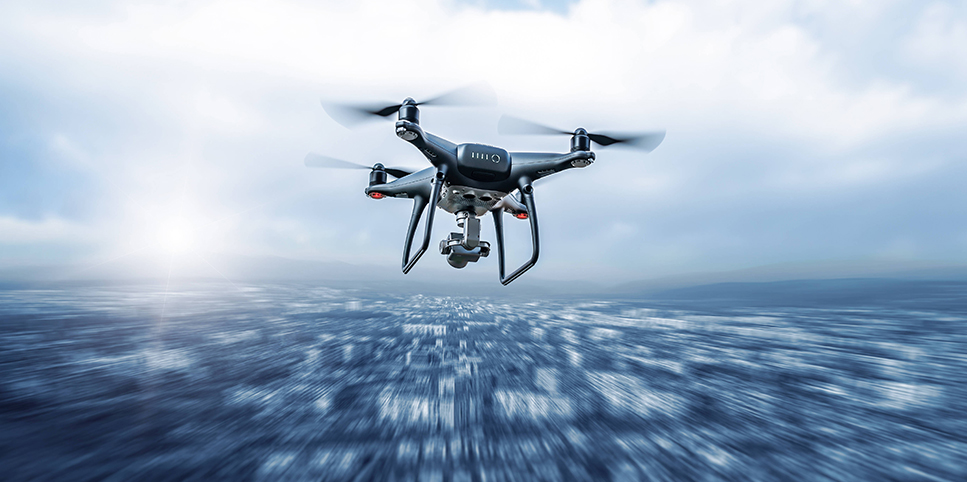Time:2023-07-14Update Time:2023-07-14
If you are interested in our products!
Email us :globalsupport@szmid.com
In recent years, with the development of drone industry technology, the number of drones has skyrocketed, and various drone flying phenomena have occurred. The risks brought by drone interference with aviation, loss of control and injury to people, and theft and infringement are increasing, which has threatened aviation safety, public safety, and national security. So how can we effectively prevent the phenomenon of drones flying indiscriminately? This necessitates the introduction of drone countermeasures technology.
Drone countermeasures technology refers to the technology of detecting, identifying, monitoring, and jamming drones through radar, optoelectronic tracking, radio interference detection, and other technical means. The countermeasures technology is mainly divided into two parts: drone detection and recognition and drone interference countermeasures.

Drone detection and recognition is a multidisciplinary application technology that achieves the detection, tracking, and recognition of drones through one or more technologies such as radar detection, radio signal monitoring, and optoelectronic identification and tracking. At present, there are multiple technologies that can achieve the detection and recognition of unmanned aerial vehicles, and the known technical means at home and abroad are as follows.
radar detection
Radar detection is a radar system that detects and measures the position of drones by emitting electromagnetic waves and utilizing the principle of electromagnetic wave reflection from the drone body. By receiving and analyzing the reflected radar waves, the range, altitude, azimuth, and velocity information of the target can be obtained. Due to the low speed and small size of drones, traditional radar has poor detection performance. In recent years, some new radars developed for drone detection have made some breakthroughs in radar signal design, signal processing algorithms, ground clutter suppression, and other aspects, which have improved the performance of radars for drone detection to a certain extent and have practical value.
Radio signal monitoring
Normally, both the flight control system and image transmission system of unmanned aerial vehicles emit radio signals during flight. Radio signal monitoring is the use of spectrum characteristics of flight control signals and image transmission signals to analyze and achieve the detection and recognition of unmanned aerial vehicles. The single station direction finding technology can monitor and calculate the azimuth information of the drone, and use the received signal strength to roughly estimate the distance of the drone; Multi station time difference positioning technology can calculate the position information of the target by solving the signal delay of the target relative to multiple receiving stations. In addition, by utilizing the wireless "fingerprint information" of drones, a black-and-white list of drones can be created to achieve control over drones, as well as precise identification and early warning of drones.
Optoelectronic identification and tracking
Optoelectronic recognition and tracking is the use of a visible light camera to detect the video image of a target drone, thereby identifying and confirming the target, and tracking it. This technology is suitable for use during the day, with lower equipment costs and more widespread applications. Optoelectronic recognition and tracking generally require guidance from detection and discovery methods. As a tracking confirmation method, it can visually track the target and enable users to observe it intuitively. In addition, photoelectric recognition and tracking automatically recognize targets through image means, thus enabling video forensics.
At present, drone interference countermeasures mainly rely on radio interference suppression technology. Radio interference suppression technology interferes with drone positioning systems or control radio signals, causing them to lose control, make a forced landing, hover, or return home.
Satellite positioning signal interference
Radio jamming is the main means of UAV countermeasures at present. Directional jamming or omnidirectional jamming can be used according to the needs of actual combat. Civil UAVs generally use GPS satellite positioning modules, some use GPS/GLONASS dual-mode satellite positioning modules to improve performance, and a few professional UAVs use GPS/BD2 dual-mode satellite positioning modules or GPS/GLONASS/BD2 the third mock examination satellite positioning modules. The existing civil satellite positioning modules mostly use spread spectrum communication technology, and the signal is relatively weak, which can be interfered with by satellite frequency points to block drones from receiving satellite positioning signals. After being disturbed, the drone may lose control and drift or crash, but this method can also cause interference to surrounding radio communication equipment.
Control signal interference
The interference methods for control signals are divided into two types: remote control signal frequency band blocking interference and tracking interference. Tracking interference can interfere with a specific frequency band based on the jump of the drone's remote control signal, reducing the interference range, saving interference power, and having minimal impact on the electromagnetic environment. The frequency modulation range of drone remote control signals is wide, requiring the use of real-time bandwidth interference equipment, which requires high processing ability and response speed. These two control jamming modes are invalid for UAVs in autonomous Airplane mode.
